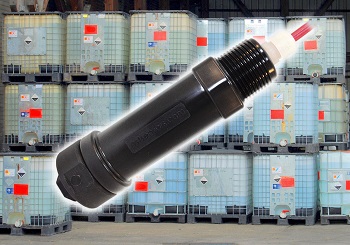Jun 16 2014
While stainless steel submersible pressure transducers are proven to provide a reliable level measurement solution for many tank monitoring applications, transducers constructed with PVDF materials offer a longer term solution in certain harsh liquids.

Stainless steels do offer good compatibility for most common liquids from potable water to fuels. However, exposure to certain liquids might require either additional protection to a stainless steel transducer or require a PVDF-based sensor as an alternative.
Sacrificial anodes are a common accessory added to a stainless steel submersible pressure transducer to prevent the surface from corroding. When used, the sacrificial anodes are clamped onto the outside of the sensor’s housing, basically wrapping around it. The accessory adds cost, labor and will eventually require replacement at an unknown time based on the galvanic corrosion rate. A PVDF submersible sensor eliminates those requirements and costs, supporting a long-term installation.
While potable water on its own is not harmful to stainless steel, additives that condition the water can create corrosive properties that increase the speed of sensor breakdown. Whereas the chemical formulation of a liquid, sensor location and quantity of additives can limit the survivability of a submersible pressure transducer made from stainless steel, PVDF material offers greater compatibility with a wider range of liquids. For example, frac water level can be monitored with a submersible PVDF pressure sensor for a longer life expectancy than a comparable stainless steel unit.
Bacteria in tanks is also common in wastewater, ship ballast tanks, and ultra-low sulfur diesel fuel tanks, causing clogging of pipes, sensors, and valves. While stainless steel can be eaten away by the bacteria in the tank causing premature failure, PVDF level sensors continue to operate without the worries of clogging or breakdown.
The Model AST 4530 Submersible Pressure Sensor is an example of a transducer constructed with PVDF material and a PTFE diaphragm to measure the level of harsh liquids such as slurries, salt water and oil in vented tanks or containers. The pressure sensors also feature a submersible PVDF cable, cord grip and conduit connection for turbulent installations such as process plants, salt water holding tanks, on-board ships, turbulent tanks, and rail cars.
For more information on AST's intrinsically safe PVDF submersible level sensor and to download our liquid compatibility guide, visit http://www.astsensors.com/submersible_level_sensors/AST4530 or contact AST at [email protected].
To read more blogs from AST, refer to: http://www.astsensors.com/blog/view-entry/Considerations-for-PVDF-Submersible-Pressure-Trans/45/#.U5oUe3JdUfU